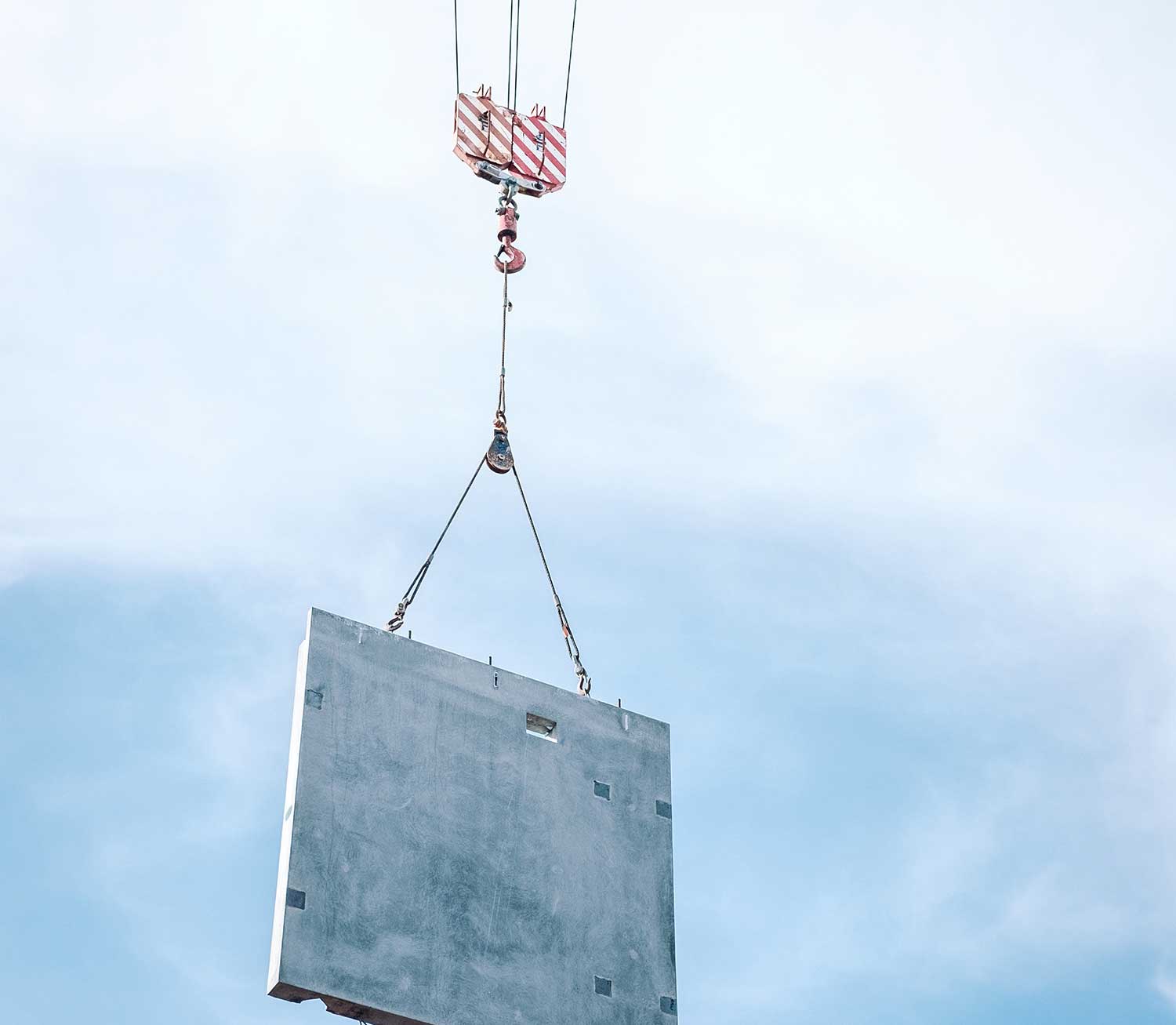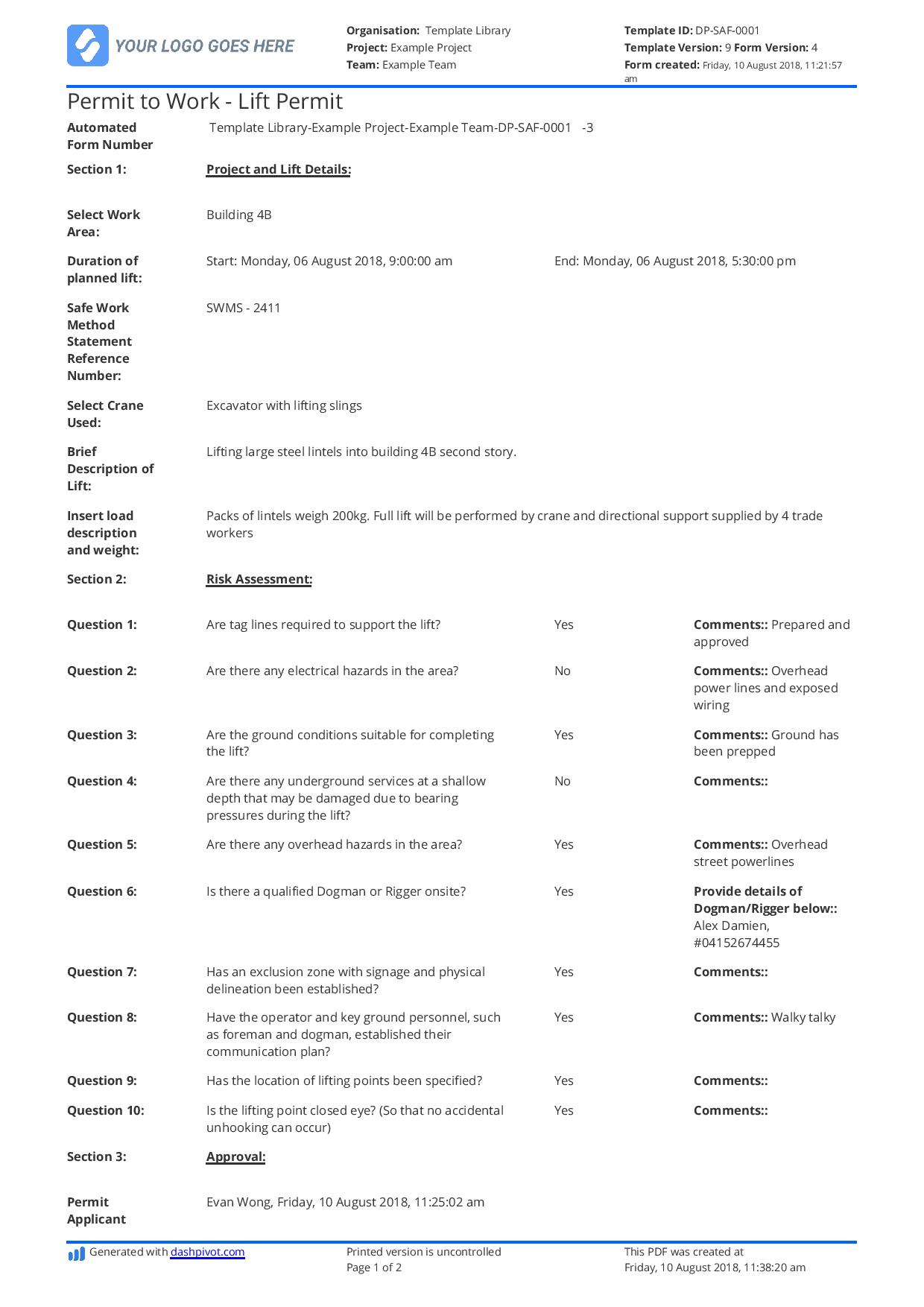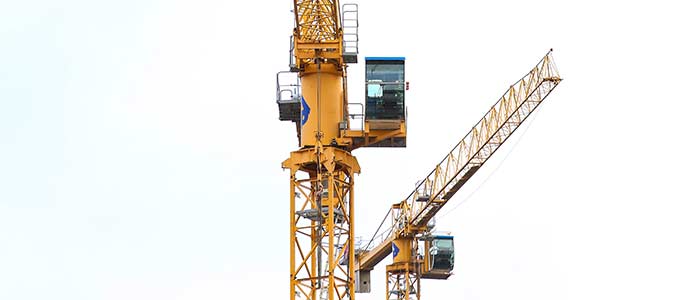Safety – Lifting permit to work
Lifting permit to work: Here's what you need to include
In this article, learn about lifting permit to work, including the critical elements to include, safety considerations, and best practices to ensure compliance with industry standards to effectively plan, authorize, and execute lifting operations.

About 'lifting'
Crane and site lifts enable construction and industrial projects to head into the sky. It's pretty miraculous what cranes have been able to (and continue to) facilitate for buildings and societies.
At the other end of the spectrum, lifts by their very nature carry a number of risks and hazards inherent in lifting massively heavy materials a number of stories and potentially hundreds of metres into the air.
There have been a number of accidents and incidents in past years relating to crane operation, which stem mostly from:
- Crane erection/dismantle and climbing
- In operation risks
- Operation error
- Weather
Together, these elements create an environment which has the potential for massive damage, serious injury and even death. And the environment in which cranes can and do operate is greatly affected from day-to-day as well, with high winds and rain often delaying lifts.
Over the years, safety regulations around crane operators and general lift safety have gotten stricter, as have the processes put in place by companies and projects in order to mitigate the chances of lift failure and accidents.
These improved processes along with the increased rules and regulations have helped - particularly in more developed countries. But complacency must be avoided and every lift should be conducted with the mind that there are a number of imminent dangers which need to be assessed, controlled for and mitigated as much as possible. Reviewing your crane Job Hazard Analysis before any crane work helps keep potential hazards and risks top of mind.
Lifting permit to work sample
One of the critical parts of any lift is creating and completing a lifting permit to work. As the name implies, this permit outlines the lift which will take place - and enables the lift operators and dogman (as well as other project parties) to move forward with the outlined lift.
There are a number of types of lifting permits and permit names, some of which are unique to certain projects and companies:
- General lift plan
- Critical lift plan
- Daily lift plan
All of these plans serve the same purpose; to ensure that all stakeholders have followed the right procedure and done the necessary checks and risk assessments to performa safe lift.
Have a look at the lifting permit sample below, and read on for a more detailed description about what you need to include in your lifting permit.

Use and edit this proven lifting permit template for free now.
What needs to be in your lifting permit to work?
There are two main purposes for your lifting permit - both of which need to be accounted for in the contents of your lifting permit.
Firstly, lifting permits are for safety record keeping and compliance. The penalties and repercussions of not complying with safety rules and regulations can be serve - not to mention that poor record keeping often costs companies hundreds of thousands or millions of dollar in unfair claims which they don't have the evidence or proof to dispute.
For this reason, each and everyone of your records should be appropriately designed, marked and stored for safe and comprehensive record keeping.
Every lifting permit should include a number of basic information items:
- Automated form number
- Project and lift details
- The work area where the lift will take place
- The duration of the planned lift or lifts
- The safe work method statement reference number (SWMS)
- The type of crane used
- A brief description of the lift
- A description of the load and load weight
The next section of the form is a risk assessment, which ensures that all of the potential risks are understood and have been accounted for and mitigated to the best of everyones ability.
Part of this risk assessment is for the operators own processes and workflows, although research has proven they are pretty good in this realm:
Statistics show operators are only responsible for 13% of accidents.
The risk assessment is equally important for external factors and factors outside of the crane operator and dogmen's control.
The risk assessment checklist (for a general lift plan) focuses on identifying and controlling for:
- Tag lines
- Electrical hazards
- Ground conditions
- Shallow underground services
- Exclusion zones
The dogman/rigger and crane operator will also declare and test their communication equipment.
This lift permitting example is indicative of a normal general lift - with more serious and potentially dangerous lifts requiring additional permitting fields and requirements.
Critical lift plans, which are required for high risk scenarios, where the cranes capacity is exceeding the regular operating limits, or where work is in extremely close proximity to assets or the public - require much more detail about the lift coordination team, and specifics around the crane and load components and dimensions, capacity checks and configurations.
But no matter what type of lift is being performed, or how 'standard' it seems or feels, lift permitting is a reliable way to prevent avoidable mistakes and increase the safety of your people, projects and assets.

Lift Permit template
Improve your lift processes and safety and compliance record keeping with this lift permit.

Daily Lift Plan for Cranes template
Get your daily lifts planned approved, and keep everyone & everything safe.

Critical Lift Plan template
Approve those potentially hazardous critical lifts quickly & safely.
